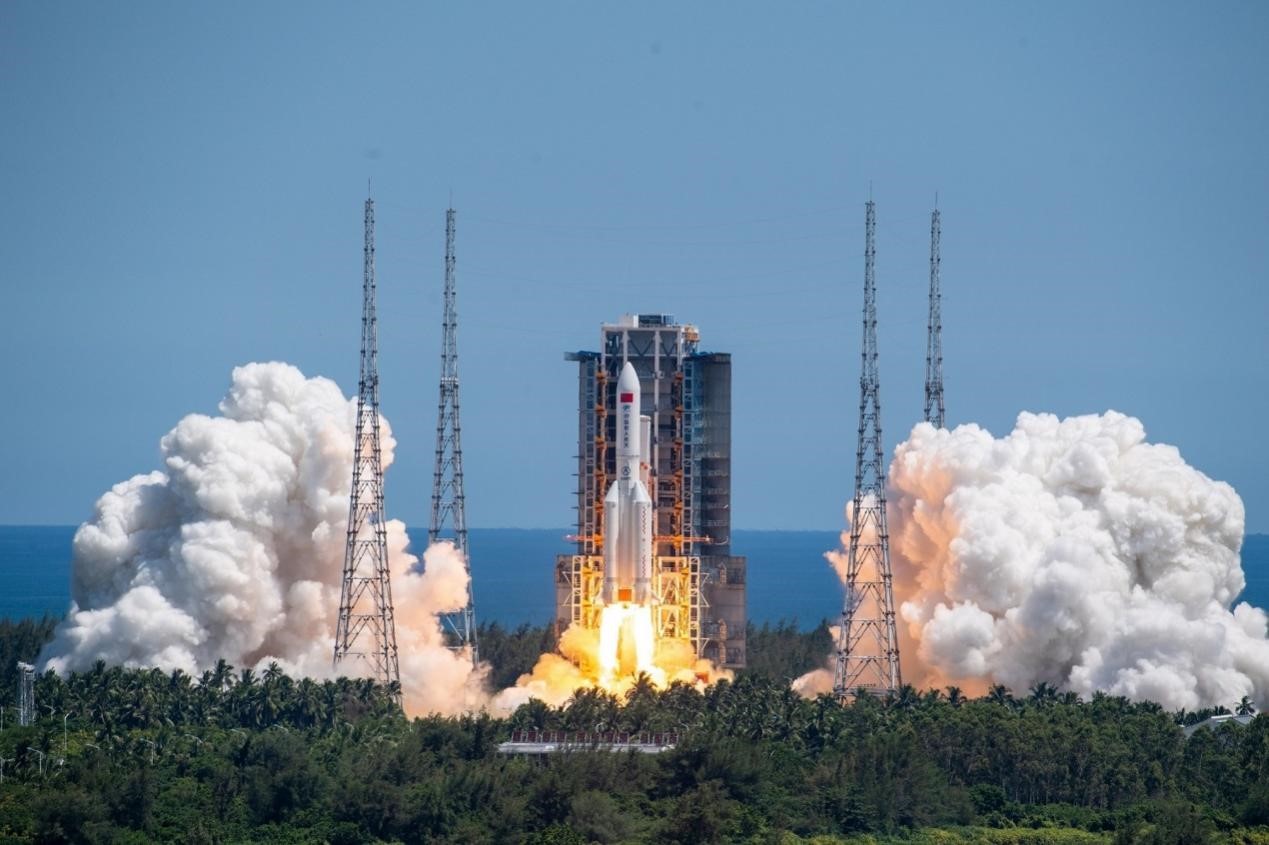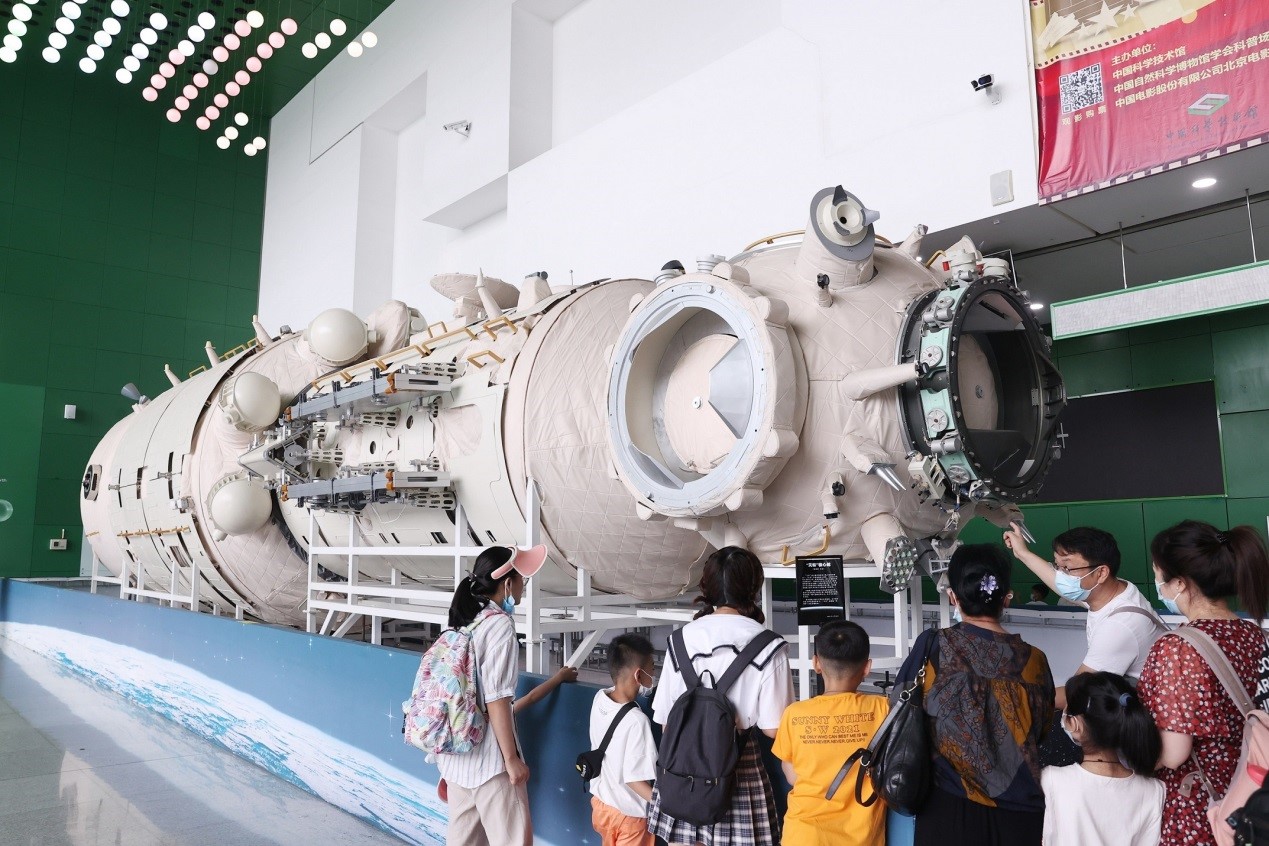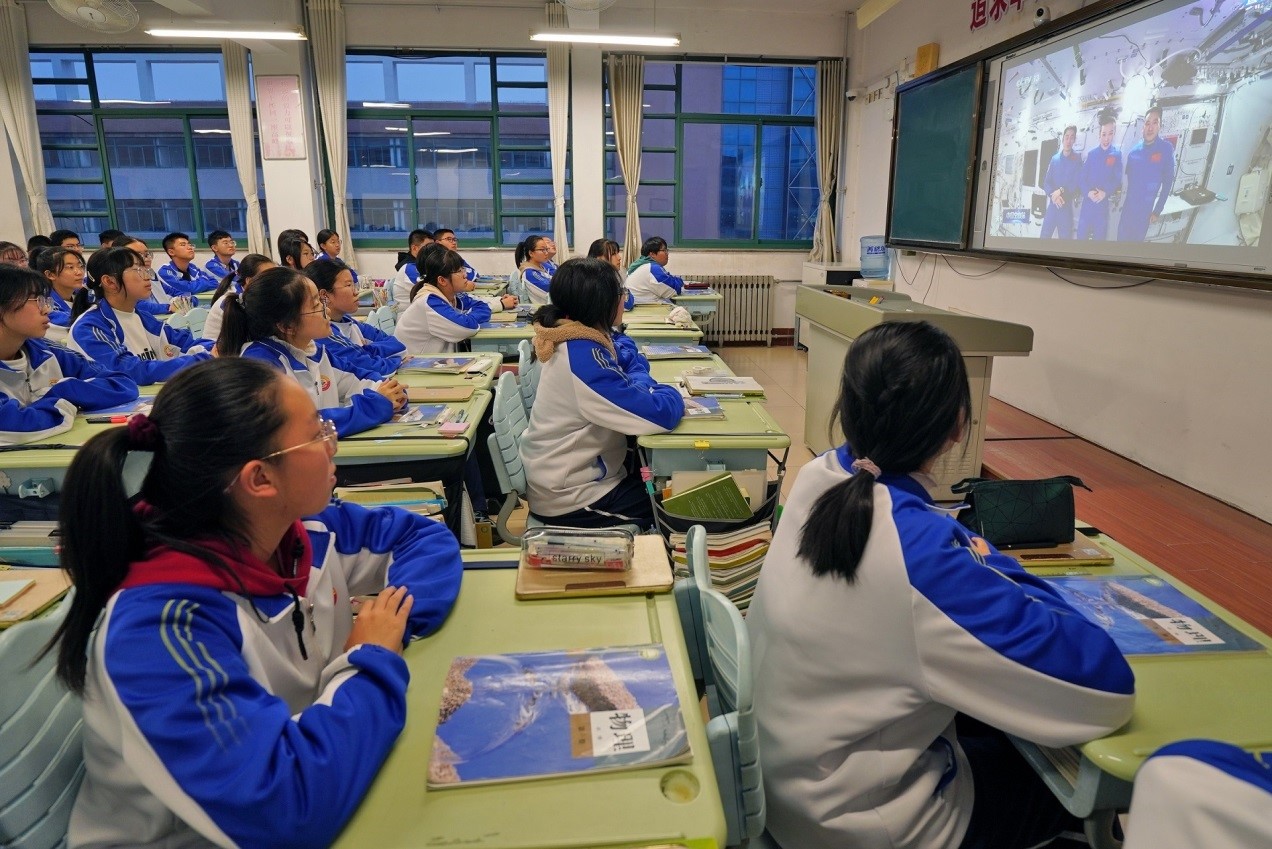
At 10:03 a.m. on July 25 (Beijing Time), the Shenzhou-14 astronauts opened the hatch door of Wentian, the first lab module of China's space station, and entered the module. It was the first time the Chinese astronauts had entered the lab module in orbit.

A Long March-5B Y3 carrier rocket, carrying Wentian lab module, blasts off from the Wenchang Spacecraft Launch Site in south China's Hainan province, July 24, 2022. About 495 seconds later, Wentian separated from the rocket and entered the planned orbit. (People's Daily Online/Weng Qiyu)
The Wentian module was launched on July 24. As the first lab module of China's space station and an important part of China's national space laboratory, it provides bigger work and living space for astronauts in orbit, as well as a larger platform for space science studies.
The Wentian module is 17.9 meters long, has a maximum diameter of 4.2 meters, and a takeoff mass of 23 tons. It is taller, bigger and heavier than the core module Tianhe, making it the world's heaviest self-propelled spaceship in service.
The Wentian module consists of a work cabin, an airlock cabin and a resource cabin. It is equipped with the same astronaut living facilities as the Tianhe core module, including three sleeping areas, a toilet and a kitchen. Together, Wentian and Tianhe can accommodate six astronauts during the rotations of two spacecraft crews. In the future, live classes from China's space station will be given in the Wentian module.
Besides, the Wentian module is equipped with parts of the living facilities and work supplies needed by astronauts, including a whole set of kitchen equipment. It means that together with the one in the core module Tianhe, there are now two kitchens in the space station, which has largely facilitated the lives of the astronauts in space.

Parents and children watch a life-size model of the Tianhe core module of China’s space station at the China Science and Technology Museum in Beijing, June 30, 2021. (People's Daily Online/Chen Xiaogen)
The Wentian module comes with the same charging equipment as the Tianhe core module, so that astronauts can use mobile phones, tablets and other portable electronic devices in space. The charging equipment, similar to the power adapters used on the ground, has significantly enhanced the space station's charging capability for portable electronic devices.
The airlock cabin can be used for the storage and inspection of extravehicular spacesuits, as well as astronaut training. The spacious cabin will allow astronauts to put on and take off their extravehicular spacesuits and operate the equipment more easily.
Upon receiving the Wentian module at the space station, the Shenzhou-14 crew has activated the life-support system in the module and completed the installation of scientific equipment to carry out experiments in orbit.
The construction of China's national space laboratory will be completed after the third module Mengtian is sent to space. The laboratory will be used for long-term, multi-area and large-scale space science studies.
Lyu Congmin, a research fellow at the Chinese Academy of Sciences and deputy chief designer of the space utilization system of China Manned Space, introduced that the Wentian lab mainly focuses on the study of life sciences and biotechnology, and researchers have planned and deployed research topics for Wentian in the four fields of space life science and biotechnology, microgravity fluid physics, space material science, and new space application technologies.
The experiments will provide a theoretical basis for human health and reproductive development, and explore a series of scientific issues concerning human beings' long-term survival in space.
Researchers have installed in Wentian a life ecology experiment cabinet, a biotechnology experiment cabinet, a science glovebox, a cryogenic storage cabinet, a variable gravity experiment cabinet, as well as common support equipment for application tasks both inside and outside the spacecraft.

Students from Fushan No. 1 High School, the alma mater of Chinese astronaut Wang Yaping in Yantai, east China's Shandong province, watch the first live class held from China's space station, Dec. 9, 2021. (People's Daily Online/Tang Ke)
Scientific experiments will be carried out in the life ecology experiment cabinet and biotechnology experiment cabinet, while the science glovebox and cryogenic storage cabinet will provide clean and confined space for astronauts to conduct experiments on the samples safely and efficiently. The cryogenic storage device offers storage areas.
The life ecology experiment cabinet will take biological samples from a variety of species, and carry out space growth experiments on plants and animals like Arabidopsis, nematodes, fruit flies and zebrafish. Lyu introduced that the experiments will help reveal the effects of the microgravity on the growth, development and metabolism of plants and animals, and will also help develop human understanding of the essence of life.
An energy particle detector and a plasma in-situ imaging detector are deployed outside the Wentian module to collect environment data in space, which will support both the health of the astronauts and the safe operation of the space station, as well as for the basic research in space environment. (People's Daily)

86-10-68597521 (day)
86-10-68597289 (night)

52 Sanlihe Rd., Xicheng District,
Beijing, China (100864)

